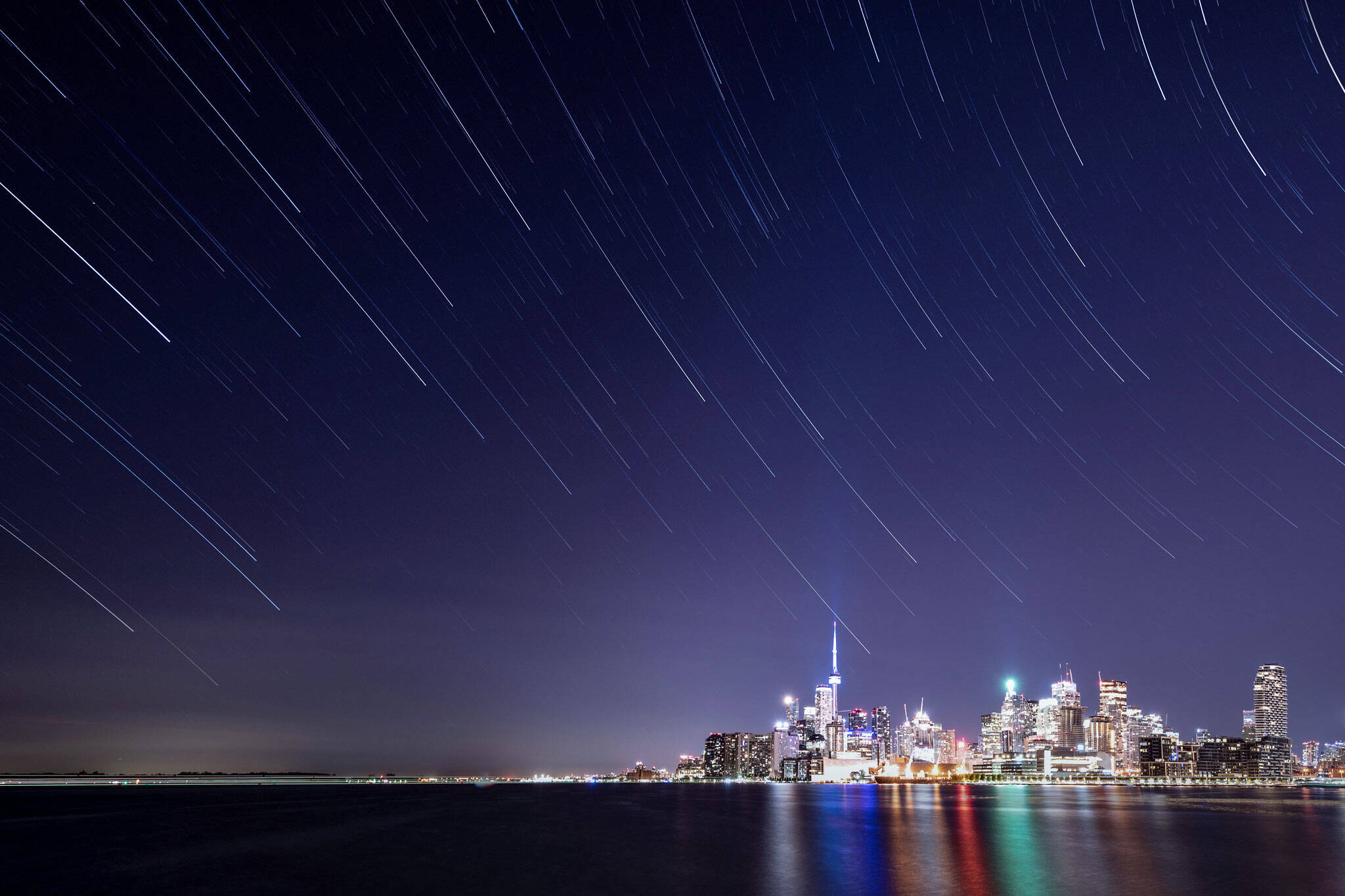
Elon Musk is fundamentally altering the night skies over Toronto
Time Magazine cover boy and possible supervillain Elon Musk has already filled Toronto streets with electric-powered Tesla cars, and now he's filling the skies above Southern Canada with thousands of satellites that will drastically change the views of stargazers.
It's the start of a wave of tech giants launching "constellations" or clusters of small satellites that are forming the beginnings of global internet service networks, including the much-hyped Starlink project from Musk's SpaceX.
Starlink has already launched over 1,700 satellites in the early stages of what has been the most talked-about of these artificial constellations, and the private space contractor has plans to launch a total of 42,000 low-earth-orbit satellites to complete the network.
And that's just one of many satellite constellations in the works.
This simulation shows the summer night sky in Toronto after all 42k planned Starlink/Oneweb/Starnet satellites have been launched. Only satellites with a magnitudes brighter than 6.5 are shown. Note that satellites will be visible all night long. https://t.co/1FRETbm6Pu pic.twitter.com/rcxJl4JKJA
— Hanno Rein 💫 (@hannorein) December 17, 2021
Hanno Rein, Astrophysics Professor at the University of Toronto and developer of the Exoplanet app, co-penned a report on the issue. He tells blogTO that "of all the operational satellites orbiting the earth, half belong to Starlink," and Musk has only begun to deploy his sprawling communications constellation.
These satellites appear in their greatest concentrations along a latitude that includes southern Canada and the Toronto area, Rein saying that we will be the "worst-affected latitude in the world."
"If you were further south near the equator, the issue is not as bad because the earth's shadow will block some of the light during the night," says Rein, "but because we're so far north, during the summer, these satellites will be illuminated all night long."
The effect on the night sky depends on the satellites’ altitude, your location and the season. Near the equator, there will be a time during the night when there are not sunlit satellites overhead. But that’s not the case for Canada. pic.twitter.com/cHqv09ES0g
— Hanno Rein 💫 (@hannorein) December 17, 2021
But what will these satellites actually look like to the naked eye? Rein says that "in downtown Toronto, they will be hard to spot, and they will not change your experience of the night sky since there's already a lot of light pollution."
Though for anyone living outside of the city in areas with dark skies, Rein says you can expect "quite a significant change," predicting that "one out of every 15 points that you see in the sky will not be a star, but one of those satellites."
This is because these satellites reach their northernmost points around this latitude before turning back south. Rein says this means "we'll see a lot of those satellites because they spend a lot of time in that turning phase."
They move across the night sky at perceptible speeds comparable to a commercial airliner traveling at cruising altitude, so they will be pretty noticeable compared to other bright points like stars and planets.
Surprisingly, there aren't any light pollution regulations in place for satellites, Rein explaining that "These companies are exploring new territory without regulations. SpaceX has tried to mitigate some of the light pollution effects by having some sort of visor attached to the satellites that block some of the light, and all this is voluntary."
With a vested interest in the night sky, Rein hopes for some kind of regulation to be implemented "to determine how bright satellites can be and to force these companies to think about this effect."
Other companies have even grander plans for satellite constellations that would further pollute the night sky with bright, fast-moving objects, but would also vastly improve global internet connectivity.
Latest Videos
Latest Videos
Join the conversation Load comments







